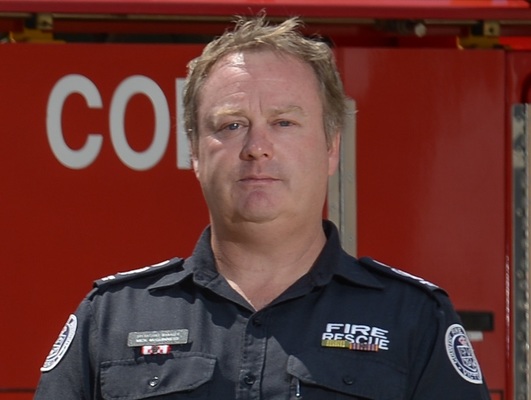
The Barwon region is set to face a “higher” fire danger this summer, according to Geelong District CFA’s operations manager Mick McGuinness.
Recent hot weather, that saw the mercury hit 34 degrees yesterday, is an “indication of what to expect for the rest of the season,” Mr McGuinness said.
“We’re facing a more rapid onset into the fire season this year as we expect the warmer weather to come around more quickly,” he said.
“We’re preparing for an average to more severe fire season, with potential for larger significant fires than normal.”
He said the increased fire risk was influenced by underlying soil dryness coupled with expected dry weather.
“We’ve received pretty much average rainfall for the winter, however, we’re seeing a rapid drying out in this first half of spring,” he said.
“There’s a high threat over the next few weeks as we expect more drier, warmer days.
“There’s likely to be a greater abundance of fuel ready to burn then perhaps average.”
Mr McGuinness said local townships such as Anglesea, Armstrong Creek and Lara faced greater fire risk.
“There’s more potential pressure on those around the urban rural interface and suburbs backing onto grassland areas,” he said.
Victoria’s emergency services conducted a pre-summer briefing this week to discuss arrangements, tactics and strategies ahead of the region’s fire season.
More than 150 firefighters will be in place from mid-November, according to State Government.
A fleet of 38 specialised firefighting vehicles will be available for emergencies over summer, including numerous fire tankers and earth moving machinery.
The water-bombing helicopter Sikorsky S61, that has a water-carrying capacity of 3000 litres, will also arrive at the Colac airbase in the coming months.
Mr McGuinness said he was “pleased” with the preparation leading up to the fire season that has involved a series of planned fuel reduction burnings.
“We’re actually probably advanced a month ahead of where we normally are at this time of year,” he said.
But he urged local communities to “immediately start” their summer preparation, including cutting lawns and reviewing fire plans.
“This is not a CFA problem, it’s a community safety matter,” he said.
“We’re the third most fire-prone area in the world… you can’t live in this environment and not be considering the potential impacts of bushfire.”






